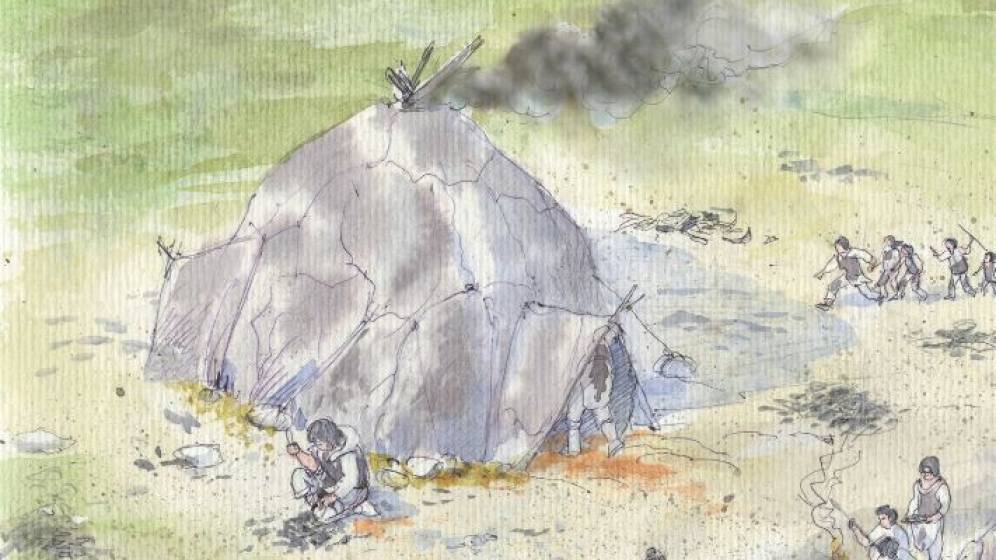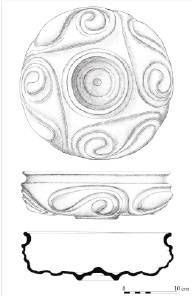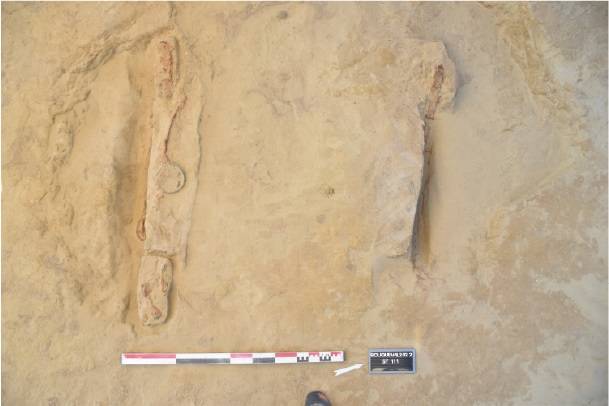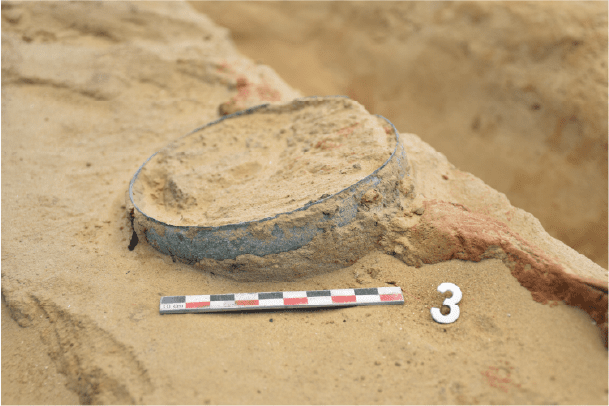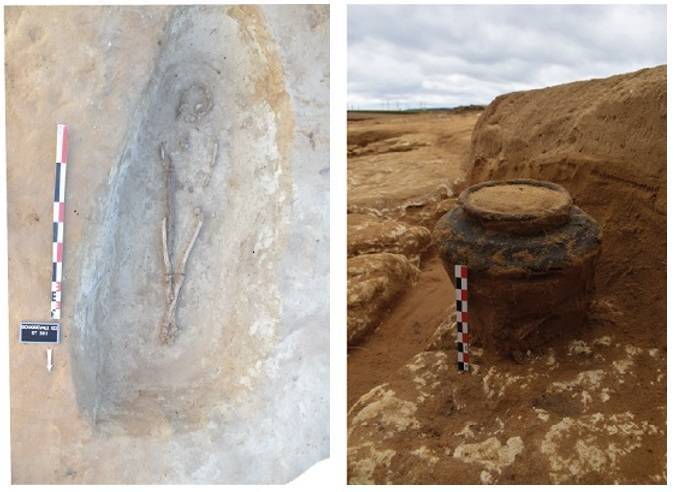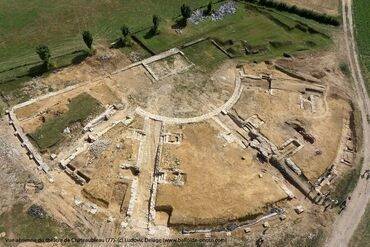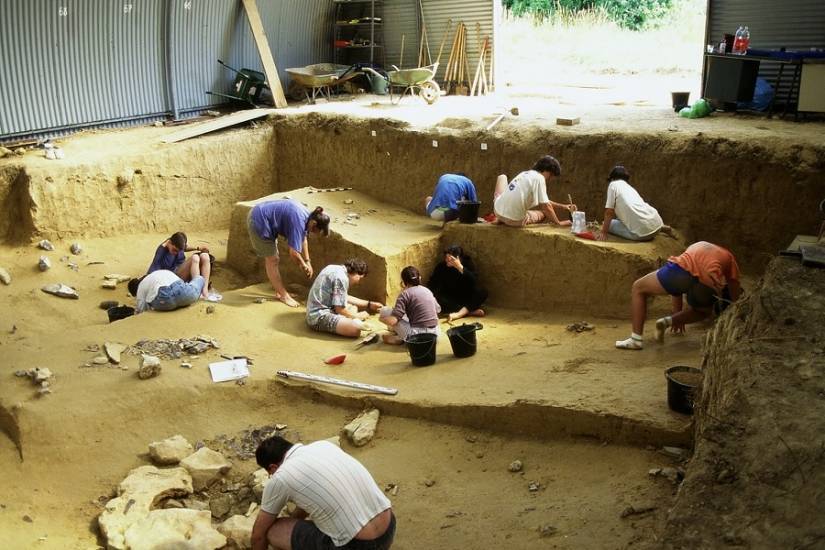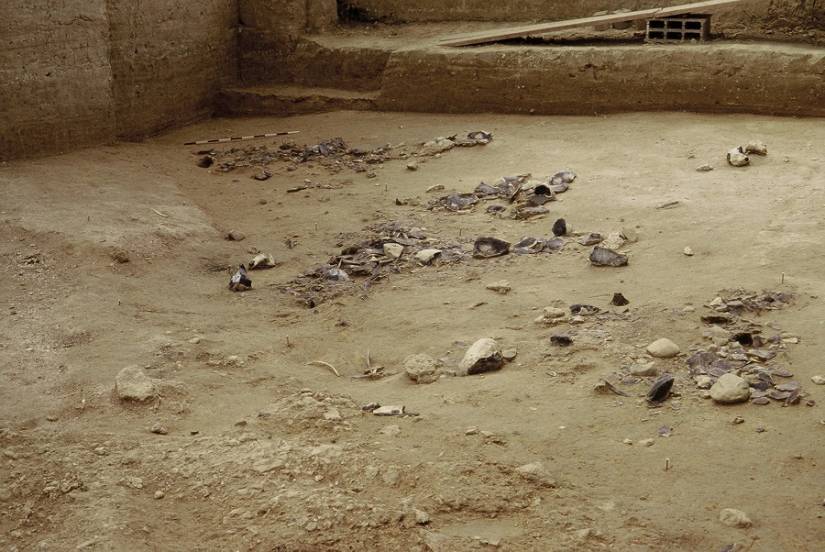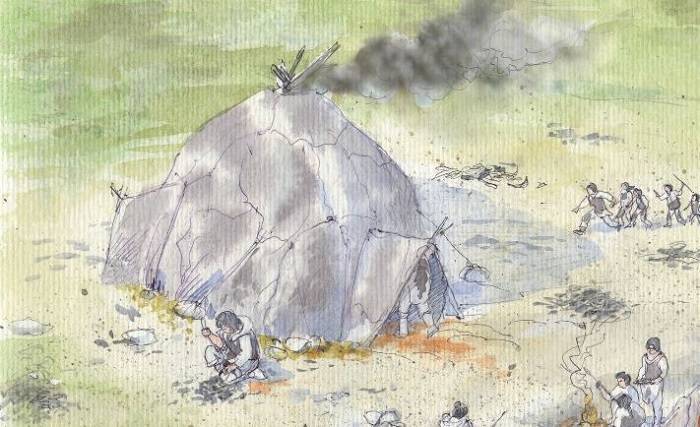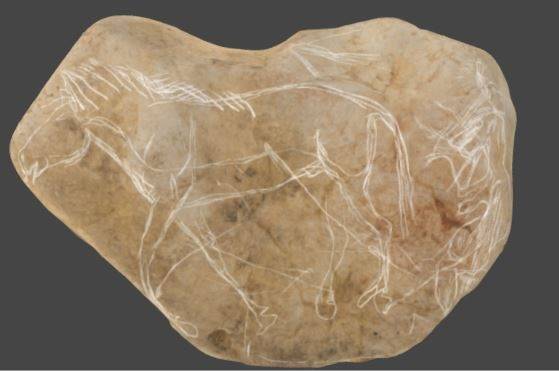The Regional Directorate of Cultural Affairs (DRAC) of Île-de-France- Service régional de l'Archéologie (SRA) organizes each year the Regional Archaeological Days in collaboration with a local authority, a public institution or service of national competence of the Ministry of Culture. For this 2022 edition, these Days are hosted by the Musée d’archéologie Nationale – Domaine de Saint-Germain-en-Laye, a major player in archaeological research and development with Ile-de-France and national audiences.
These days allow to present the recent archaeological researches carried out on the territory of Ile-de-France. Open to professionals, volunteers and the general public, they bring together representatives of all institutions active in the field and are a highlight of regional archaeological activity.
They take place over two days and are published the following year
|
Programmed archaeology, selected theme of the 2022 edition
The wealth of archaeological research in Île-de-France, in fact, is based both on the numerous and regular discoveries made in preventive archaeology and on the new knowledge brought by planned archaeology on the heritage of our region. These two aspects of archaeology, which are separated only by administrative procedures, are found in the same scientific and technical practice of the discipline, and carry complementary challenges for our territorial and cultural policies. For the general public they constitute one and the same universe.
During these 2022 regional archaeological days, the "theme" highlights programmed archaeology whose temporality does not always allow archaeologists to present their work and the progress of their research as regularly as they would like. However, Île-de-France has long distinguished itself by the number of its players, the plurality of research conducted, and in recent years the growth of pilot programs that SRA Île-de-France has supported and even initiated with its partners.
Programmed archaeology covers a large number of types of operations and practices: field surveys (aerial, underwater, pedestrian, geophysical, LIDAR, with metal detectors, etc.), collective research projects, surveys, annual and multi-year scheduled excavations, rock art surveys, documentary studies, publication preparations, publishing aids... This operational gradient, which accompanies the entire surgical chain of research, calls on many different skills and experiences that it is interesting to share.
Beyond the scientific results, it will also be a question of taking stock of the research areas, chronological periods and geographical areas favoured in the Île-de-France in order to reflect on future programming, but also to take the time to exchange on scientific methods and practices in terms of conservation and management of scientific data of archaeology (movable archaeological property and documentation).
These days are open to all those involved in archaeology, volunteers or professionals, who wish to learn more about their region.
For reasons of organization and access to the building, registration is mandatory. It is done from the following website: Archaeological Days of Île-de-France 2022
In case of difficulties, you can contact us at the following email address: cynthia.domenech-jaulneau@culture.gouv.fr
Programme of the Regional Archaeological Days of Île-de-France 2022 to download
Focus on three sites: Bouqueval, Châteaubleau, Etiolles
The Gallic necropolis of Bouqueval
The necropolis of Bouqueval (Val-d'Oise), awarded to IVse and IIIe century before our era, is located on the north slope of the valley of the Daubée, stream now disappeared, tributary of the Crould. The site, discovered by Mr. Cecchini in pedestrian prospecting, is known since 1976 for its exceptional vase with plastic decoration and was the subject of excavation campaigns in 1977 and 1978 by the volunteers of the Prehistoric and Geological Youth of France under the direction of R. Guadagnin. They uncovered two chariot tombs and twelve burials, two of which each delivered a sword and a spear, but also adornment elements (fibules, bracelets, torque).
Drawing of the Jatte de Bouqueval © M. Cecchini – 1978
As part of a development project, a diagnosis conducted in 2021 led to the discovery of two additional weapons burials as well as a burial without furniture kept.
Plan view of the Structure 111 wheel bandages, photo © L. Devilliers , SDAVO
Copper alloy hub detail from Pit 111, photo © L. Devilliers, SDAVO
The excavation, prescribed by the State and carried out in 2022 by the SDAVO (Service départemental d'archéologie du Val d'Oise), allowed the discoveries of the 1970s to be spatially recalculated, the pits to be completely rebuilt and the necropolis to be extended (approximately 3,180 m²). Two additional tank graves could be identified, but due to particularly intense erosion on the eastern part of the right-of-way, only wheel bandages and a hub are preserved. An individual buried in a weapon with a complete set, two individuals with a sword and three pits without bones kept but with armament (spear and sword, or sword alone) were also discovered. Thirteen other burials were uncovered containing most often adornment (fibula, or iron bracelet). One of them is a child’s burial accompanied by a funerary deposit (ceramic and wildlife).
Burial of the individual 303 with his armament, photo © C. Quatrelivre, SDAVO and Detail of a ceramic in an incineration pit, photo © C. Gillain, SDAVO
An unexpected result of this operation lies in the discovery, in addition to burials, of fifteen incinerations, some of which contained up to three small vases. They are currently being searched in the laboratory. Their presence raises questions, not only about funerary practices, but also about the chronology: do these cremations reveal a longer period of use of the necropolis than envisaged? Moreover, the state of conservation of the many metal elements, will make it possible to carry out research on mineralized remains (textile and vegetable fiber) in addition to the problems related to the production networks and the provenance of these furniture. Élisabeth Tribouillard, archaeologist
Ancient town in the town of Châteaubleau
In the small town of Castles In Seine-et-Marne, an ancient town has been the subject of archaeological excavations since the early 1960s, a large part of them by the association La Riobé. This exceptional site is being developed as of 1 January;er century of our era with the construction of the Via Agrippa connecting Boulogne-sur-Mer to Lyon, with several phases of occupation during the Pax Romana (from 29 BC to 180 AD) then to the Lower Empire (IIIe and IVe centuries). In addition to its residential, handicraft and theatre districts (1), this town has seen the development of various shrines attesting to the important role of Châteaubleau during antiquity.
The theatre from the sky. Built during the IIe century of our era, the theatre is a half-circle horseshoe of 80 m diameter. The bleachers were served by five aisles with four staircases providing access to the upper level. The outer wall is adorned with buttresses to maintain the thrust of the monument, photo © Ludovic Delage - https://journees-archeologie.fr/c-2022/fiche-initiative/13659/Site-archeologique-de-Chateaubleau
A shrine in Châteaubleau. In 2018, a new shrine was excavated. A large basin, more than 15.2 m long and 8.7 m wide, was discovered. A wooden bridge comprising several rows of oak piles allowed the crossing east-west for a width of at least 6 m. This structure, which worked between the beginning of the IIe s. (at least) and end of IIIe s. had a function of collecting stormwater but also, most certainly, a cult vocation. A bronze statuette of a female deity holding a horn of plenty and another of donkey suggest it, as well as ceramic and monetary furniture in particular, photo © Fabien Pilon – La Riobé Association
Rectangular roof tile of the 1st century AD. (probably from a temple. Discovered at the edge of a large pond). It is a clay tile of grey brown color, and shaped with a writing on it. The alphabet used is the Latin alphabet, in cursive, that is, the “bound” writing, but it notes the Gallic language. One assumes the use of a Greek word. The Gauls did not have their own alphabet, but used that of the neighbouring peoples: Greek or Latin.How can you write on a tile? Well it’s very simple: before the clay hardens we write with a metallic stylus and then the clay hardens because we cook it and it forms what we saw, photo © Association La Riobé - https://archeochateaubleau.wordpress.com/la-tuile-de-9-lignes/
The excavations uncovered remarkable archaeological furniture including, for example, tiles with inscriptions engraved in the Gallic language from antiquity and objects attesting to the presence of a workshop of counterfeiters.
Etiolles: several nomadic hunter-gatherer camps
The site of Étiolles in the Essonne (-14,000 to -12,500 BCE) is dated to the recent Palaeolithic period, especially the Magdalenian. Excavated since the 1970s, it is an exceptionally well-preserved reference site, as is the Pincevent site in Seine-et-Marne.
Tiered levels in the stratigraphy: The alluvium deposited by the annual floods of the Seine cover each level of occupation. Here, several layers are observed during the excavation showing the repetitiveness of the installations. Sometimes only a few centimetres separate them, sometimes more, photo © ARPE – https://archeologie.culture.gouv.fr/etiolles/fr/organisation-campements
One hasU5-P15, photo © ARPE - https://archeologie.culture.gouv.fr/etiolles/fr/organisation-campements
This site has revealed several nomadic hunter-gatherer camps superimposed on each other (stratigraphy) and located on the banks of the Seine, near the flint lodges needed to make the tools, and close to game hunting areas (horses and reindeer).
In a camp in Étiolles, exterior and interior view of a house, drawings © MAN / Gilles Tosello - https://archeologie.culture.gouv.fr/etiolles/fr/les-habitations-1
Bundle of isolated blades in the margins of the house W11 in Étiolles, photo https://archeologie.culture.gouv.fr/etiolles/fr/savoir-faire-quotidiens © ARPE - and Perforated shell found on a recent level in Étiolles, photo © Marianne Christensen - https://archeologie.culture.gouv.fr/etiolles/fr/parure-art-et-curiosites
Each camp consisted of several dwellings (tents 5 metres in diameter), fireplaces, activity areas (mainly flint cutting, butchering) and waste disposal areas (flint, household emptying, wildlife remains). Studies suggest that each camp was the temporary home of a small community of a few families.
The engraved roller of Etiolles (3D). About 30 centimetres long and weighing 3 kg, the hard limestone block has rounded edges and two very smooth faces: it is therefore in the strict sense of a pebble, even if, in common parlance, a pebble usually means a smaller and lighter stone. Front: a horse is followed by an imaginary being that combines human and animal attributes. The red area near the left edge is due to exposure to heat from the fireplace. Back: on this side covered with tiny concretions, the engravings are finer and denser. There is a horse and two reindeer of more basic design, arranged head-to-head. Object preserved and presented at the departmental museum of Prehistory of Île-de-France, in Nemours. 2018 Gilles Tosello Survey © MAN / Summum 3D (digitization), Marjorie Fremaux (animation) - https://archeologie.culture.gouv.fr/etiolles/fr
Among the impressive amount of archaeological furniture in flint, bone, shell for example, a unique piece for all the north of France and for the entire Magdalenian period was discovered in 2000 in a fireplace. It is a pebble engraved on two sides representing two horses, a thérianthrope (god or a creature endowed with human and animal attributes) and two reindeer.
Partager la page
